Review: ‘Class Action Park’ is a Captivating and Hilarious Look Back at the World’s Most Unsafe Adventure Park
‘Class Action Park’ is a triumph in responsible storytelling, as it delicately blends scrutiny and ridicule of its subject matter. (Graphic: Peter Elliott)
September 18, 2020
Those who experienced Action Park agree on one thing: it was the most dangerous adventure park in American history.
The one thing they can’t seem to come to a consensus on is which attraction was the most hazardous.
“The most dangerous ride from the sheer amount of injuries would be the Alpine Slide,” said the park’s director of security, making a strong case for the downhill ride on chutes made of fiberglass, concrete, and asbestos that was so unpredictable it routinely flung riders off their sleds, leaving them with Action Park-branded bumps and bruises.
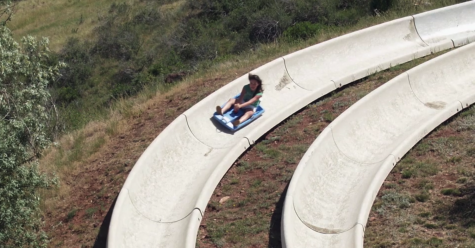
“Colorado River Ride may have been the most underrated dangerous ride,” argued one long-time attendee, tallying a vote for the chaotic raft ride — formerly a lazy river — that had no defined path or lifeguard presence.
And you could, as many have, make a strong argument for the wave pool, an unreasonably violent aquatic experience that killed several people and threatened many more lives on an hourly basis. (There’s a reason it was called “The Grave Pool.”)
Of course, there was no safe attraction at Action Park, the New Jersey amusement park that built its brand on unregulated, do-it-yourself fun. Opening in 1978, the park enjoyed immense success in the 1980s by billing itself as a haven for thrill-seekers who wanted their beer cold and their ribs bruised.
If Disneyworld is the gold standard of theme parks with its immaculate brand identity, zealous customer service, and reputation for safety, Action Park would be its estranged libertarian cousin with a Wawa rewards card.
It was, at once, equal parts laughably dangerous (go-kart drivers frequently drove drunk due to the Grand Prix track’s proximity to the beer tents), shoddily-constructed (the park was paved with highway-grade asphalt, and those who failed to bring flip-flops suffered “chopped-meat feet”), and perversely charming (day-to-day operations were essentially run by teenagers, some as young as 14-years-old).
Action Park is, if nothing else, an other-worldly attraction of a bygone era that needs to be seen to be believed.

But the very thing that made Action Park such an attraction — its dangerous reputation — ended up leading to its demise. The park’s refusal to accept any responsibility for the harm it caused, coupled with mounting lawsuits and years of negative press eventually shuttered Action Park in 1996.
Everything about Action Park was almost outright criminal, and it’s a miracle that federal agents never swooped in to padlock its gates. (Though after all, everything’s legal in Jersey.)
That’s why it is remarkable that for so many years after the park’s closure, its story was left untold to mainstream audiences, making it feel like one big inside joke among New Jersey and New York natives of a certain age.
But seemingly over the last five years, the park has rightfully emerged as an object of widespread fascination. It’s been the subject of a non-fiction book, several video shorts, and served as the inspiration for a Johnny Knoxville movie.
In late August, it checked off another box on its belated nostalgia tour, as it was the subject of a feature-length documentary for the first time.
Available exclusively on HBO Max, Class Action Park is a delightful re-telling of the Action Park saga, an engrossing journey into the past that will have you simultaneously howling in laughter and furrowing your brow at all the absurdity.
The best storytellers find new ways to tell old stories, and that’s where filmmakers Chris Charles Scott and Seth Porges really shine.
Scott and Porges could have easily coasted on the shock value of the documentary’s subject matter for its 86-minute runtime, but they added new dimensions to a story many have tried to tell.
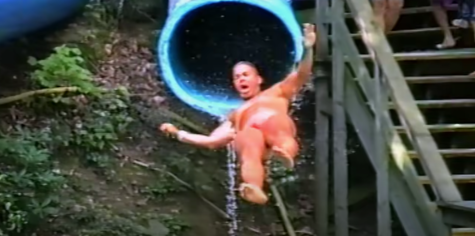
Class Action Park doesn’t take itself too seriously, but that doesn’t stop it from closely examining and scrutinizing its titular focus. It closely examines the traps of nostalgia and provokes uncomfortable questions about hidden trauma and the stories we tell ourselves about our childhoods.
The engrossing nature of the documentary is fueled in large part by one crucial technical aspect: the pool of archival footage at the filmmakers’ disposal. A problem that historical documentaries frequently suffer from is simply that they lack enough footage to overlay the narratives being presented by their experts. Class Action Park does not suffer from that malady. When you hear people talking about swimmers almost drowning, you see patrons fighting for their lives in the water on the screen. And when you do see the occasional recycled shot, it’s a welcome sight, because it’s probably ridiculous enough that you’re glad to see it again.
What couldn’t be captured on camera was hilariously illustrated by intentionally shoddy animation that is reverent of both the cartoons of the time and Action Park’s makeshift construction.
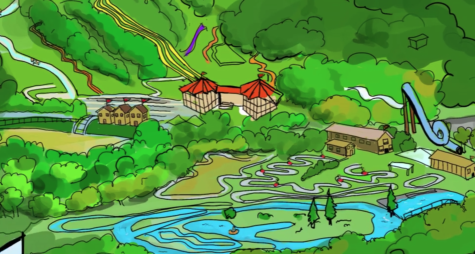
The eighties aesthetics are reliably present, so much so that the film grain and over-the-top Action Park commercials had me wanting to crack open a Crystal Pepsi and fire up my Walkman.
The documentary’s main subject — aside from the park itself — is Eugene Mulvihill, the reckless visionary who was obsessed with making sure Action Park lived up to its name.
If you combined the desire for grandiosity and showmanship of Vince McMahon, the transparent fraud and false-advertising of Fyre Festival creator Billy McFarland, and the money-laundering ability of Marty Byrde, you would be left with Mulvihill.
There’s an interesting schism in how Mulvihill is regarded by the documentary’s interviewees, a diverse group that could be more-or-less classified into two categories: those who regarded Mulvihill as a cartoonish wannabe tycoon whose recklessness got people killed — and those who credit him for making their teenage summers memorable.
The latter tend to speak of him reverently, calling him “Uncle Gene,” and celebrating his unique vision for an adventure park.
This cuts to the problem with romanticizing Action Park, what Vulture writer Jen Chaney called “Toxic Nostalgia.” The filmmakers nimbly walk a fine line between remembering the fun that was had while also weighing all the pain felt by those who were betrayed by Action Park.
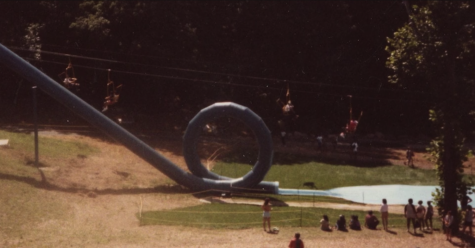
While you’re laughing at the fact that anyone thought the Cannonball Loop was a good idea, it’s easy to forget the human loss of life rendered by the negligence of Mulvihill and others.
Much of the Class Action Park’s last twenty minutes is dedicated to scrutinizing the death of a teenager at the park, and how easily it and other deaths could have been prevented. Though it drags at times and lacks the enchantment of the documentary’s first hour, it is nonetheless an important chapter in the Action Park story.
The filmmakers and interviewees deftly draw a through-line from today’s generation of kids, who have their lives surveilled on Life 360 and social lives tightly controlled, to their parents’ generation — latchkey kids who eschewed seat belts, wandered freely about town, and were only told to be back in time for dinner.
“Action Park was like the movie The Purge,” proclaims narrator John Hodgman. “Thousands of kids with pent-up aggression and a healthy dose of alcohol were given a space where they could do whatever they wanted.”
The next time you go to, Six Flags, notice the promises its promotional material is making you. It winks and nods at you, goading you to test your mettle on “Dare Devil Dive” or try a gluttonous funnel cake.
But while theme parks advertise their extreme thrills, there is an understanding that the “Mega Wedgie” won’t actually put your life in danger.
Action Park would.
Class Action Park is now available to stream on HBO Max.

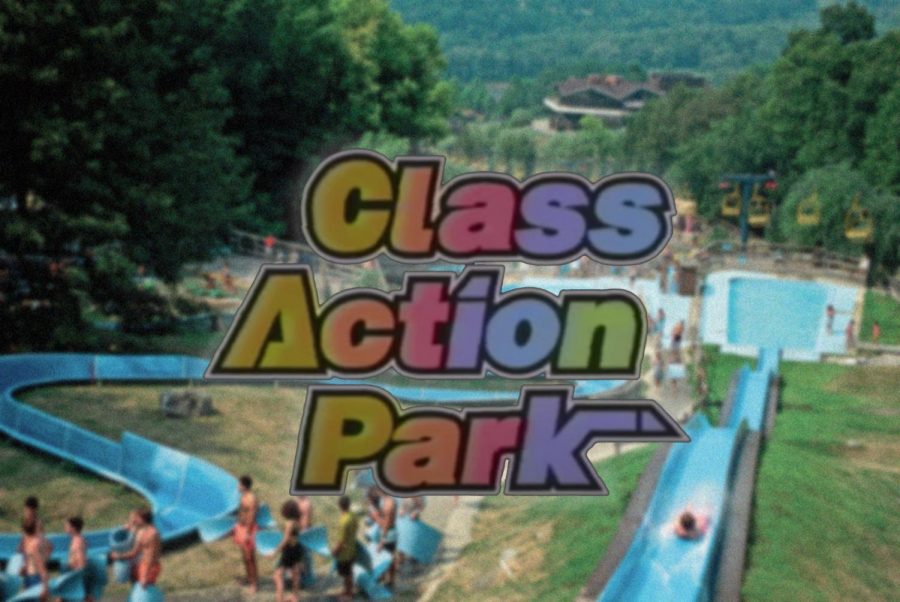
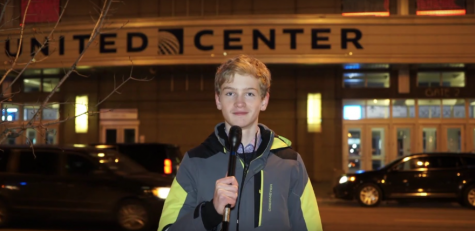





#1 fan • Sep 20, 2020 at 10:28 pm
Omg ths is such an AMAZING artcle!!!!!!!!!!!